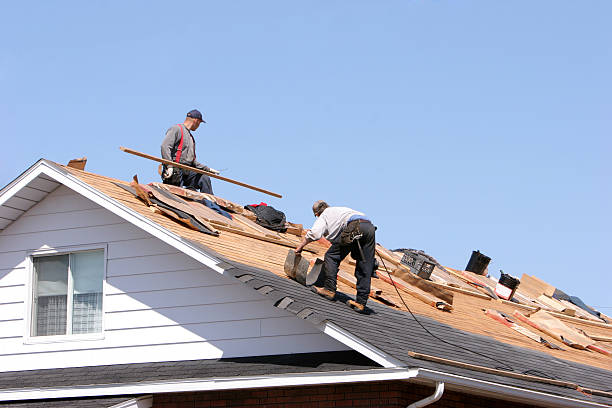Important Homeowners Notice: Save Thousands on a New Roof
Your roof is more than just a cover over your head—it’s one of the most critical investments in your home. A high-quality roof protects your family, maintains your property value, and ensures long-term energy efficiency. However, installing a new roof can be expensive, with costs often reaching thousands of dollars depending on materials and labor. The good news is that with careful planning, research, and smart decisions, homeowners can save a substantial amount of money without compromising quality. This article provides practical strategies to help you assess your current roof, choose the right materials, get competitive quotes, leverage discounts, and maintain long-term savings.
Assess Your Current Roof
Before rushing to replace your roof, it’s essential to determine whether you truly need a full replacement. Signs of wear and damage include:
- Leaks or water damage: Look for stains on ceilings, walls, or attic areas.
- Aging or curling shingles: Shingles that are cracked, missing, or curling may indicate imminent failure.
- Structural issues: Sagging or weakened roof decking requires immediate attention.
A thorough roof inspection can be done yourself using a detailed checklist, but some situations require a professional. DIY inspections are suitable for spotting obvious signs like missing shingles or visible leaks. Professional inspections are recommended when:
- You cannot safely access the roof.
- Damage is suspected under shingles or in structural components.
- You need documentation for insurance purposes.
Choose the Right Roofing Material
Selecting the right material affects not only the initial cost but also the roof’s longevity and maintenance needs. Here’s a comparison of common options:
- Asphalt Shingles: Affordable upfront cost, moderate lifespan (15–25 years), low maintenance. Good for budget-conscious homeowners.
- Metal Roofing: Higher initial cost but long-lasting (40–70 years), excellent durability, fire-resistant, and energy-efficient.
- Wood Shakes: Attractive aesthetic but higher maintenance and shorter lifespan (20–30 years).
- Composite or Synthetic Shingles: Mimic wood or slate with lower maintenance, moderate cost, and 30–50 years lifespan.
For homeowners looking for a balance of cost and durability, asphalt or composite shingles often offer the best value. Metal roofs are ideal if you prioritize long-term savings and energy efficiency.
Get Multiple Quotes
Obtaining multiple quotes is crucial for making an informed decision. Here’s how to approach it:
- Research contractors: Look for licensed, insured, and locally reputable roofing companies.
- Compare quotes: Evaluate prices, materials, warranties, and additional services.
- Watch for hidden costs: Removal of old roofing, transportation, permits, and insurance coverage can significantly impact the total price.
As a reference, according to industry averages, replacing a 2,000 sq. ft. roof with asphalt shingles can range from $6,000–$12,000, depending on labor and material quality (data from Remodeling Magazine’s 2023 Cost vs. Value report). Getting three or more quotes often uncovers potential savings of 10–20%.
Leverage Insurance and Discounts
Homeowners may qualify for insurance claims if roof damage is caused by storm, fire, or other covered events. Always check your policy before proceeding.
Other opportunities for savings include:
- Seasonal discounts: Some contractors offer lower prices in off-peak seasons.
- Bulk material purchases: Larger projects or multiple homes may benefit from supplier discounts.
- Government incentives: Energy-efficient or solar-compatible roofing may qualify for rebates or tax credits.
DIY and Partial DIY Options
While full DIY roofing is risky and generally not recommended, certain tasks can reduce costs:
- Cleaning gutters and removing debris before the contractor arrives.
- Transporting materials if you have the tools and safety measures.
- Minor repairs or patching for small leaks under professional guidance.
Always hire professionals for major installation or structural work. Mistakes can lead to expensive damage and safety hazards. A realistic approach is partial DIY for preparation, combined with professional installation for critical tasks.
Long-Term Savings Tips
Investing in a new roof is also about minimizing future expenses. Consider these strategies:
- Regular maintenance: Clean gutters, inspect shingles, and fix minor leaks promptly.
- Choose durable materials: Higher upfront costs often lead to lower lifetime expenses.
- Secure warranties: A solid contractor warranty protects your investment and reduces potential repair costs.
By focusing on durability, proper maintenance, and professional guidance, homeowners can avoid unexpected expenses and extend the lifespan of their roof, saving thousands over time.
Conclusion
Replacing a roof is a significant investment, but careful planning, informed choices, and smart strategies can substantially reduce costs. Assess your roof’s condition accurately, select the right materials for your needs, obtain multiple competitive quotes, leverage discounts and insurance, and maintain your roof regularly. With these steps, homeowners can safeguard their property while potentially saving thousands of dollars.
Reference for cost data: Remodeling Magazine, 2023 Cost vs. Value Report.
